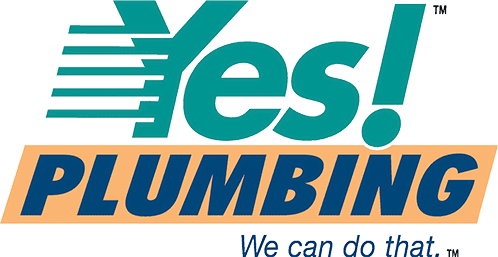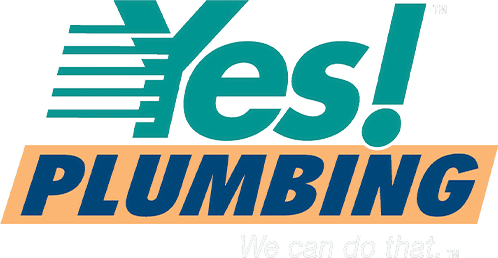Your sewer line carries wastewater away from the washing machine, dishwasher, Bathroom sinks, toilets, tubs and showers, and floor drains of your home. It travels underneath your yard to the street, where it connects to the municipal sewer. If you don’t have a municipal sewer it goes to your septic tanks and field.
Because of what the sewer is disposing of, when problems do occur, the result is usually a very unsavory situation.
A sewer line problem usually causes stuff that you don’t want to keep to come back to your home through toilets, tubs, floor drains. It’s more than unpleasant.
We can solve your problems
At Yes! Plumbing we have specialized equipment that allow us to actually see into your buried sewer lines. The old saying “a picture paints a thousand words” comes alive for our clients when they can actually see what has caused their problem.
Since 1993, YES! Plumbing has prided ourselves on building a tradition of service and value for the many thousands of family members we have serviced in the Illiana area.
Common causes of a sewer line clog
Let’s see if we can figure out what it is that makes a sewer line plug and back up. Then we can see if there is a way to prevent a sewer clog or cure the problem.
Tree Roots
Root infiltration is by far the most common cause of clogs in sewers in the home. The sewer or septic line runs underground once it exits your home. Trees, bushes, or shrubs are a potential danger to the line.
If your sewer line develops any kind of breech then the roots from these plants will sense the moisture and “fertilizer”. When that happens they head directly for the source and infiltrate the sewer by growing very fine “hair” roots that protrude through the hole in the sewer to absorb water and nutrition.
As the roots grow, they not only start filling the inside of the sewer, but they expand with such force that they can actually burst the sewer pipe to allow even more roots to infiltrate. At this point it is just a matter of time before the roots start catching flushed debris, resulting in a sewer clog.
How can you prevent tree roots from entering the sewer?
- If you plant trees or shrubs plant at least 10” away from the sewer.
- There are tree services who can move existing trees to another location.
- Try to plant trees that are slower growing and have a root spread radius of the smallest size (check with your local arborist). Most tree root systems will extend to the edge of the tree branches so that’s a good rule of thumb to determine where to plant.
- Once you determine you have a root problem, the sewer can be treated with a foaming herbicide every so often to eliminate the roots without killing the tree.
- In the worst case the sewer will have to be excavated and repaired.
Kitchen waste and “flushable” wipes— the biggest culprits
Pouring grease or that water from the pot in which you just boiled fatty meats in down the sink or disposer should be a huge no-no in your home.
Grease
Of these, grease is the worst possible thing to dump in the sink. When grease runs through the pipes, it begins to cool.
As it cools, the saturated fats (think bacon grease, butter) begins to solidify with the temperature change. This stuff sticks to the pipe and begins to build up like plaque in a blood vessel. Eventually, it’s sticky, gooey mess and the pipe will no longer carry even water down the drain.
Food Waste
Grease isn’t the only problem. There are a few classes of foods you will want to avoid in the disposer on the kitchen sink.
First is any food that may expand once it comes in contact with water. The best examples are rice and flour.
Next avoid greasy foods and food products like bacon, fat cutoffs from dinner plates and the like.
We’d like to give a caveat that a food disposer is actually good for your kitchen drain line if used properly. It’s also good for the environment as it reduces the amount of solid waste placed in landfills and actually provides a food source for the beneficial bacteria which break down the other organic wastes in the sanitary sewage system.
“Flushable” waste
Just because something is labeled as flushable doesn’t mean that it should be.
A good rule of thumb is that if it’s not easily dissolved in water quickly, then don’t flush it.
Things like human hair, tampons and pads, or flushable wipes. In our experience flushable wipes (definitely not flushable) are the worst possible thing to flush down the drain. They are almost 100% guaranteed to hang up on any defect or sticky spot in the drain line and allow water to seep through but solids do not.
So more and more build up over time until you have a massive clog of wipes. We’ve seen cases where literally hundred of wipes piled up before the homeowners recognized a problem.
In the worst cases it is less expensive to excavate the sewer than spend days trying to get them out of the sewer.
The “Belly”
Even though your sewer was correctly installed when new a couple of conditions can cause the pipe to form a belly or sag in the line.
There could have been ground movement which caused a small leak at a joint which allows the supporting ground to soften up and the extremely heavy weight of the soil above presses the sewer line into the surrounding softened soil base. When there is a belly some of the sewage, usually solids, settle into that point and eventually cause a clog.
The sewer can be cleaned out via water jetting or mechanical rodding.
The best way to diagnose sewer line clogs, leaks, and other issues is by using a sewer camera. Yes! Plumbing has cameras and locators available for all trucks that are able to diagnose whatever problem is encountered.
If you have reason to believe that your sewer line is experiencing issues, a sewer line inspection is the next step. Talk to your local plumbing professional about scheduling a camera inspection.
Here’s how you know
Complete clog
Single drain clogs like toilets and sinks where you only have one drain clogged require small cleaning equipment and are relatively easy to treat.
On the other hand if all the drain lines are clogged, you most likely have a main drain clog problem.
Stop using water and call us immediately as sewage may start coming up in the lower drains in your home and cause serious contamination and damage.
Partial Clog
Some clogs will give you a little warning before you get a complete clog.
Our advice: Pay attention and take action if you are lucky enough to get this warning. Early action can save you a lot of damages and sewage cleanup.
Symptoms include gurgling sounds in toilets and drains, water stains around floor drains in basements and crawlspaces, toilets that fill up with water to a higher level than normal when flushing, or toilets that have almost no water in the bowl a short time after being flushed.
If you see any of these call us immediately to schedule a licensed plumber to come out and diagnose the issue and take care of it for you. We also provide emergency plumbing service!
As always, you will get a live operator 24/7 when you call Yes! Plumbing from Northwest Indiana or Illinois.
Give us a call! (708) 847-7045 Yes! Plumbing. We Can Do That!


